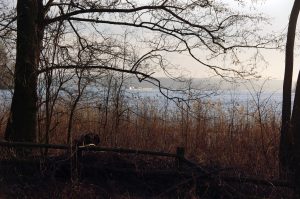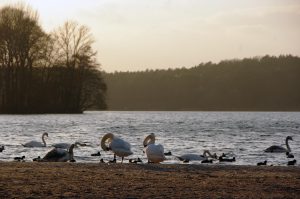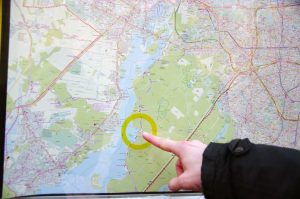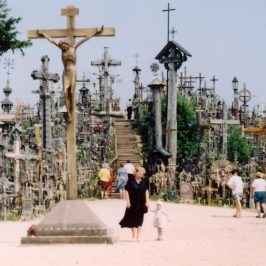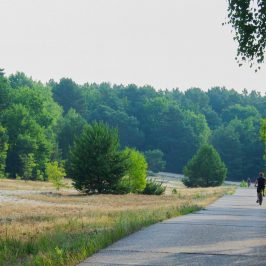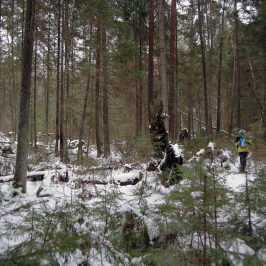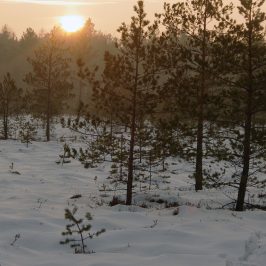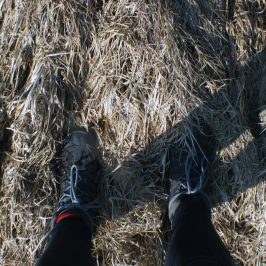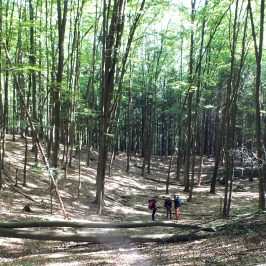I started to write this piece 3 times already, wanting to exaggerate the lack of sun I have found in Berlin while staying here but actually it is not true. Days are quite sunny and I try to spend any of them walking around the city, visiting the parks and places not mentioned in regular travelling books. I never had a chance to be a real tourist in Berlin and after some time it just doesn’t feel right to visit heavily touristic places, luckily Berlin is not only the Brandenburg gate and the Wall memorial; most likely even the real ‘Berliners’ haven’t visited all of the interesting spots one could find in this massive city having more inhabitants than my mother country Lithuania.

So one beautiful and not too cold day two of us traveled to Grunewald. I have been there at least 3 times, but only to a small part of it – Teufelsberg (German for Devil’s mountain), which is for sure a must see place in Berlin. This time the plan was to visit the forest itself and reach the lake with a mystical tower.
Grunewald is not so difficult to reach using public transportation from different parts of the city. There is also some sight to see on a way. Only after arriving to a train stop we realized that this is the same stop where Gleis 17 monument is.
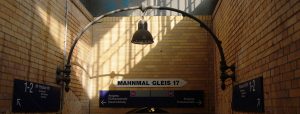
History time: During the World War II Nazi regime conducted elimination of so thought “inferior” races, including Jewish, Roma, or disabled, homosexual people, as well as people of different political or ideological beliefs. Holocaust mainly hit Jewish population by taking lives of 6 million (!) people, as well as 200 thousand Roma people and at least 200 thousand mentally or physically disabled people. For this goal special camps in rural area were constructed, people where took from their homes and sent to uncertainty by trains.
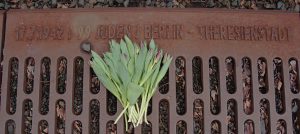
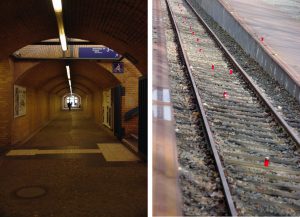
The first transportation in Berlin occurred in October of 1941 when 1000 Jews were deported to Lodz ghetto in Poland. More than 60 thousand Jews were deported from Berlin only and 50 thousands of them were deported from Gleis 17. This area was chosen of its remoteness, huge crowds of people being deported was not widely seen as this part of the town in sparsely inhabited. The last train left Berlin on February 1945.
These days no trains are leaving Platform Nr. 17 as it is closed and turned into monument for the terrible history. The entry is open for 24h and has no fee. On the ground tiles there are dates of each and every deportation that happened here, showing number of people and destination. School pupils come here with history teachers to talk about Holocaust, bring flowers and respect deported people with a minute of silence. People come here in groups or separately to light a candle and stay several moments. Unfortunately we had no candles so we paid our respect to tragic events and proceed to the forest.
Almost 4 minutes away from the station the forest appear. It is the biggest green area in the city of Berlin. In summer time this place is crowded by people walking around but spring has its perks as the area is relatively free. Luckily for the nature, not everything is open for visitors, the most sensitive parts are closed as a nature preservation area, where no regular human can enter. It is mostly protecting amphibians and birds.
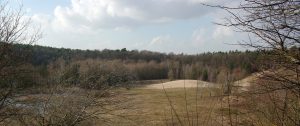
In my eyes it is very unfortunate that Berlin area is that flat. But on the other hand there is quite many high spots where you can see the vast panorama of a massive city. Once we entered the forest we could see one of them – Teufelsberg and the abandoned sky station on top.
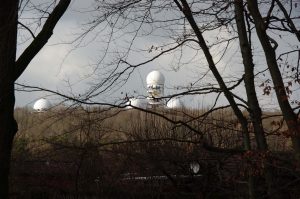
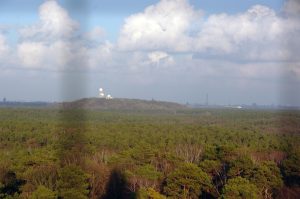
History time: The Devils mountain (Teufelsberg) is not of natural origin. The story of how it was build is very much fascinating for me, this is why I think that this place is an absolute must during Berlin trip.
During the WWII Berlin was destroyed almost completely, it had unimaginable numbers of rubbish and debris. People had to do something with them, so they moved them into two designated places. One of them happened to be the Teufelsberg. Yup, so the whole 80m (120m above sea level) hill is pure debris of Berlin. It is absolutely impressive to climb there as it is quite hard to process in your head that the whole mountain is man-made.
Moreover, on the top of the hill there is another point of interest. You could find there an abandoned U.S. listening station which was used during the cold war.
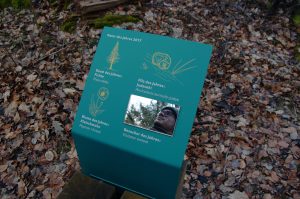
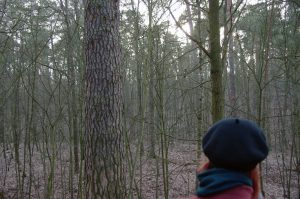
So we preceded though the trees, enjoying sunshine and warmness. Recently a new touristic path way was constructed here and it is very interesting as it has a lot of small stops where they tell about nature, what we could see around and human impact to environment. Some parts of the todays part was used for taking sand for building, not this area is closed the being re-naturated. It looks like a lot of wild life is passing through there as they could have a peaceful moment for themselves and all around there are footprints.
Other interesting info station was a swamp, that used to be s quite big lake but as the water level dropped, the lake water went down to Earth leaving only a tiny pond with swampy surroundings. The stations were relatively close to each other, and one had even a small watching tower where you could compare a wildly growing or cleaned forest. It expanded our horizons for sure!
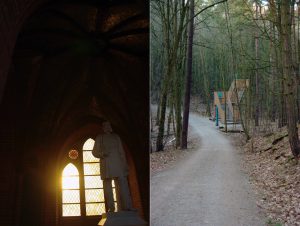
The most impressive was the last station before the tower. The installation contained the amount of CO2, in cubic meters, I think, one inhabitant of Berlin is producing, including transportation, household and industry. And when you see it made out of wood, and when it is two times taller than you, it shocks for sure! Of course, it was compared with one person in an African country, which is hundred times less. Made me a little bit depressed but I guess it could have been even stronger, so people after this would do something about it.
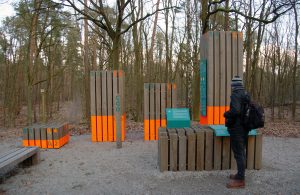
The easy and nice stroll through the park finally brought us the mystical tower, basically in a middle of nowhere, just standing there all tall and fancy. I really wanted to climb up there so were went looking for an entrance. Sadly the tower is not for free, and I would say not cheap. To climb up there, with our own feet we had to pay 4€ per person. Yet, we were already there so we had only to climb.
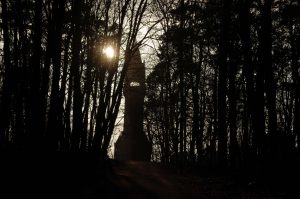
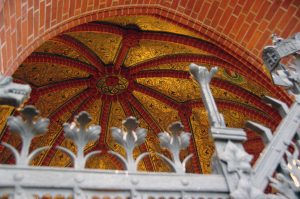
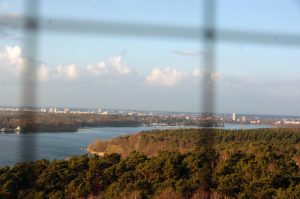
History time: The tower was constructed in 1897, to celebrate the 100th birthday of the German Emperor Wilhelm I, he was also a king of Prussia. At the beginning the tower’s name was Kaiser-Wilhelm-Turm (In English: Emperor William Tower) but after WWII it was renamed as Grunewaldturm, after the forest we have just hiked though.
As we enjoyed the view from the tower, the sun started to set. Then we realized the metro stop is not so close after all and we have to hurry a little bit to reach it with sun light. We decided to go back on a different way and try to reach different line than the one we came with. This time our route was following the long but not very wide lake. We were enjoying the last sun and many water birds. We saw the bunch of swans at the beach, we were not brave enough to go close to them but a tiny dog that was took for a walk did not hesitate and ran straight into them scaring the birds away. As annoyed swans swam further we continued our hike back to the train with the sun setting on our heels.
